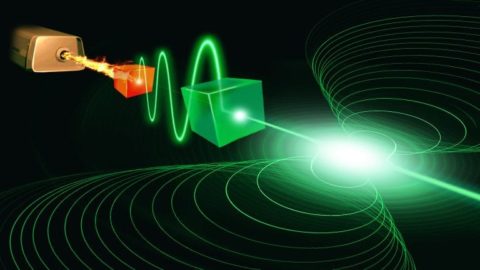Quantum theorists have overturned a 60-year old theory about how lasers work that could fundamentally remove the Heisenberg Limit on coherence in these important and ubiquitous devices.
The coherence of a laser beam is essentially the number of photons that are emitted consecutively into the beam with the same phase. It determines how well a laser performs in various precision tasks, such as controlling all the components of a quantum computer.

However, researchers from Griffith University and Macquarie University in Australia writing in the journal Nature Physics have now shown that new quantum technologies open the possibility of making this coherence vastly larger than was thought possible.
‘The conventional wisdom dates back to a famous 1958 paper by American physicists Arthur Schawlow and Charles Townes,’ explains Howard Wiseman. ‘They showed theoretically that the coherence of the beam cannot be greater than the square of the number of photons stored in the laser. But they made assumptions about how energy is added to the laser and how it is released to form the beam,’ adds Wiseman. ‘The assumptions made sense at the time, and still apply to most lasers today, but they are not required by quantum mechanics.’
The new work shows that the true limit imposed by quantum mechanics is that the coherence cannot be greater than the fourth power of the number of photons stored in the laser. The researchers have now demonstrated through numerical simulation how this might be achieved, which could lead us to a “super laser”.
‘Our work raises many interesting questions,’ said Wiseman, ‘such as whether it could allow more energy-efficient lasers. That would also be a great benefit, so we hope to able to investigate that in the future.’